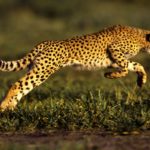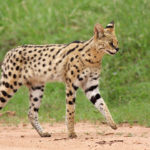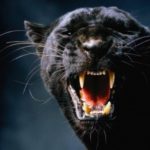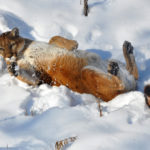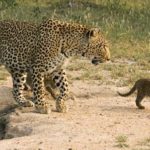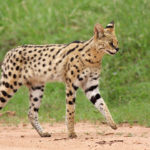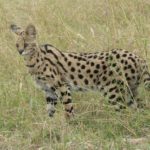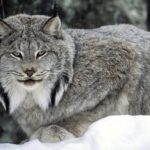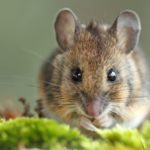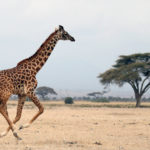Cheetahs
 The cheetah is the most atypical representative of the cat family. The way of life and physiology of this animal are so peculiar that it is isolated in a particular subfamily. Thus, the cheetah stands apart from other kinds of cats.
The cheetah is the most atypical representative of the cat family. The way of life and physiology of this animal are so peculiar that it is isolated in a particular subfamily. Thus, the cheetah stands apart from other kinds of cats.
This medium-sized beast: body length of a cheetah up to 1.5 m, weight – 40-65 kg. The body of the cheetah is streamlined in a graceful shape, the belly is lean, the head is small with short ears, the tail is thin and long. It is characteristic that his legs are very high and dry. Claws on the paws are not pulling, like all felines, but dog-like stupid. The cheetah’s hair is very short, fitting, and on the withers there is a mane made of hard black hair. The whole face of this animal reveals the sprinter in him.
Initially, cheetahs lived everywhere in the steppes and semi-deserts of Asia and Africa, but now in Asia cheetahs are almost completely exterminated. Now you can see these animals in sufficient numbers only on the African continent. Cheetahs inhabit exclusively open spaces, avoiding any thick thickets. These animals lead a solitary life, but males often combine into groups of 2-3 individuals. In general, the nature of these animals is not feline – they easily tolerate each other’s presence, and tamed cheetahs show devotion to the dog. Unlike most cats, cheetahs hunt exclusively during daylight hours. This is due to the characteristics of the food.
They feed on cheetahs with small ungulates – gazelles, antelopes, less often mountain sheep (in the foothills of the Caucasus), hares and birds. Sometimes they dare to attack young growth of large antelope wildebeest.
His victims cheetah tracks down almost without hiding, coming to a distance of 30-50 m, he lies and sneaks to the victim on his half-bent paws. Approaching, he begins to pursue prey. The cheetah is the absolute world record holder in terms of running speed. In a sprint tug, he effortlessly develops a speed of 100-110 km / h! During the run, the flexible cheetah’s spine bends so much that the beast can throw its hind legs far forward. At this speed of running, claws play an important role, which strengthens the grip of the paws to the ground and does not allow the cheetah to slip when turning sharply. An additional stabilizing function is performed by the tail: when bending, it is thrown to the side opposite to the turn, thereby preventing skidding.
However, despite all these adaptations, the inertial speed of the cheetah is enormous and in maneuverability it loses to its victims. For a predator, such mistakes are of vital importance, because a cheetah running at the limit of his physiological capabilities is not capable of prolonged persecution. Not catching up with the victim on the first hundred meters of the distance, he stops pursuing. Thus, although victims of cheetahs can run at a speed of no more than 60 km / h, only 20% of attacks end successfully.
